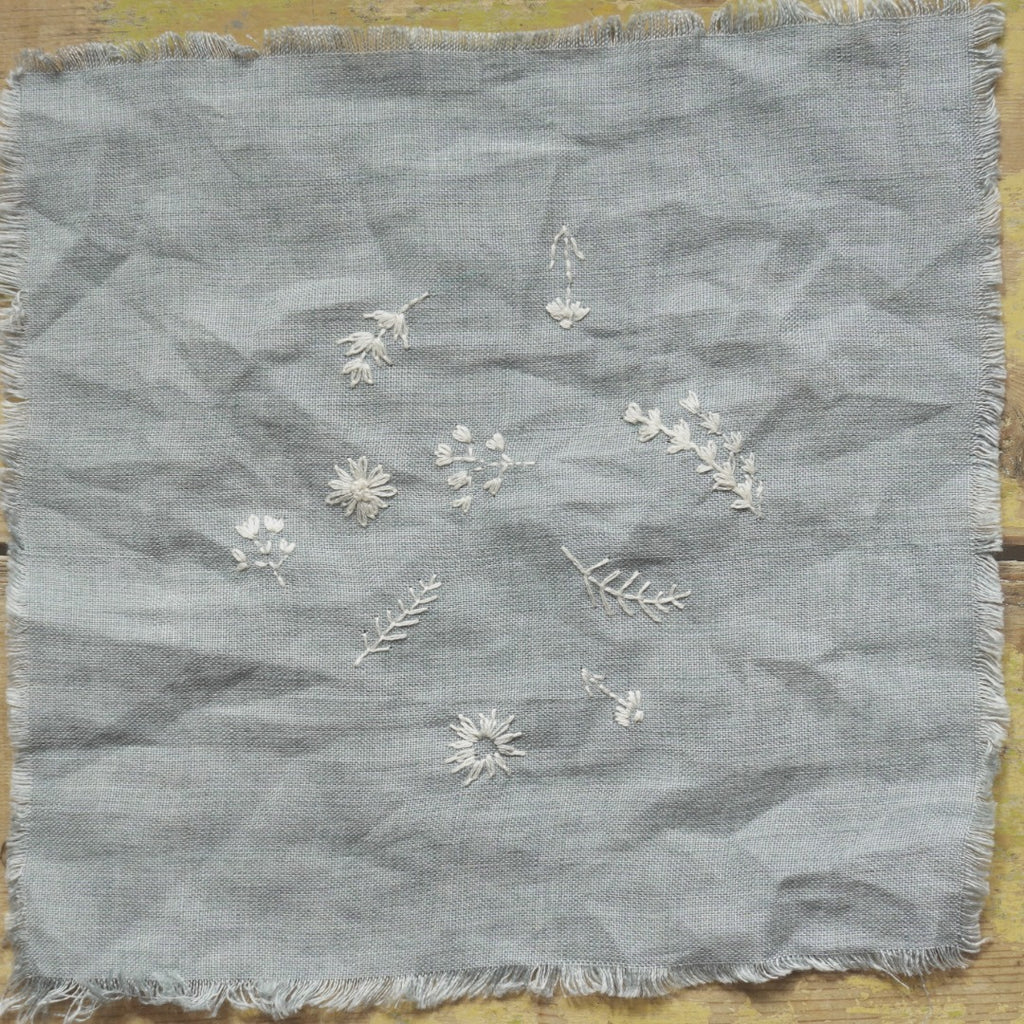Embrace Imperfection & Learn to Embroider Wildflowers on a Linen Napkin

In this blog post and video, we'll explore the art of embroidering wildflowers on linen napkins using the Lazy Daisy Stitch, French Knots, and Back Stitch. Plus, we'll discuss how embracing imperfections can create a naturalistic and charming look.
Finding Inspiration:
Before starting your embroidery project, seeking inspiration can be a great way to set the tone for your design. Consider exploring botanical books with diagrams and colorful illustrations of flowers. These can help you decide on the placement and design of your wildflowers.
Planning the Design:
For this project, a zigzag pattern along flowering stems is chosen for the design. To begin, crease the napkin to find the center of the corner and mark it with a water-soluble pen. For those who prefer working without a pattern, using paper circles as rough guidelines can help decide on the amount and placement of the flowers. However, don't be afraid to deviate from the initial plan and invite creativity while embroidering.
The Loopstart, start embroidering without a knot:

Using DMC six-strand embroidery floss is ideal for this project. Pull two strands but only use one to create a delicate look. To start your embroidery thread without a knot, use the loop method. This involves threading the ends through the eye of the needle, forming a loop at the fold, which will serve as the first petal of the Lazy Daisy Stitch.
The Lazy Daisy Stitch:
To create the Lazy Daisy Stitch, come up with an imaginary ring around the center of the flower. Then, go back down into the fabric where you came up and come back up where you want the petal to end. Form a loop with the thread and secure it with a small stitch. Repeat the process to form beautiful petals. Embrace imperfections, alter stitch lengths, and experiment with different placements to achieve a natural and charming appearance.
Adding French Knots:
French Knots add a lovely textured effect to your wildflowers. Start with the loop method but make a tiny stitch instead of a longer one for the petals. To create French Knots, wrap the thread around the needle a few times, hold the wraps under your finger to secure them, and make a small stitch while holding the needle in the fabric. Experiment with the number of wraps and strands for varying effects.
Connecting Flowers with Back Stitch:
Use the Back Stitch to connect the flowers and create the stem. Make single straight stitches, leaving gaps between them, and then go back to fill those gaps. Don't worry about perfect connections; slightly wonky lines can add character to your design, resembling pencil sketches and doodling.
Finishing Touches:
To ensure your embroidery stays secure, avoid crossing large distances without securing the thread at the back. Weave the thread through existing stitches to reach your desired starting point. To finish the thread, weave it through a few stitches and create a few knots. Leaving a small thread tail ensures that your masterpiece will withstand wear and tear.
The Final Result:

Once your wildflowers are embroidered, wash out the water-soluble pen and give the napkin a gentle press to showcase your work.
Embroidering wildflowers on linen napkins is a relaxing and creative way to add a touch of nature to your table. Embrace imperfections, experiment with stitches and colors, and let your creativity bloom as you bring this naturalistic look to life. Happy embroidering!
